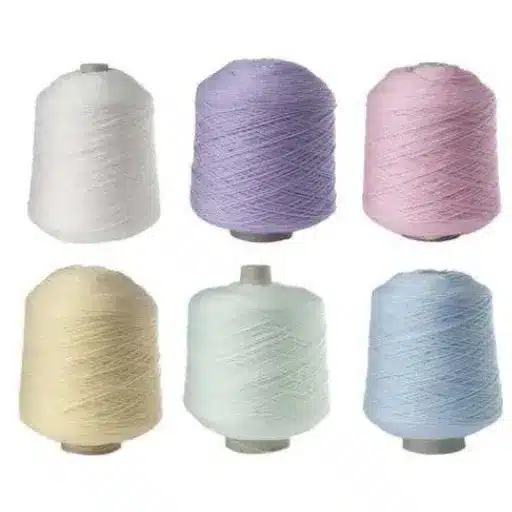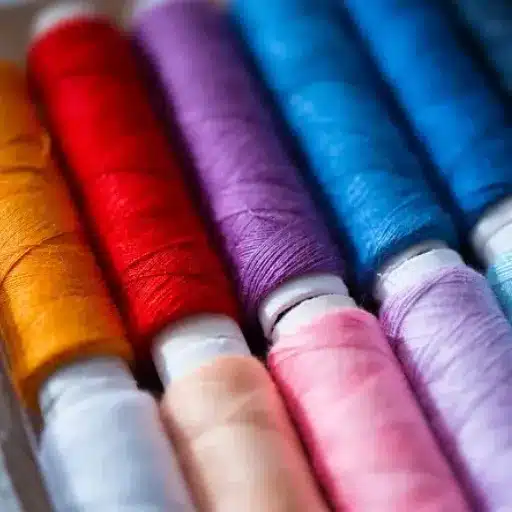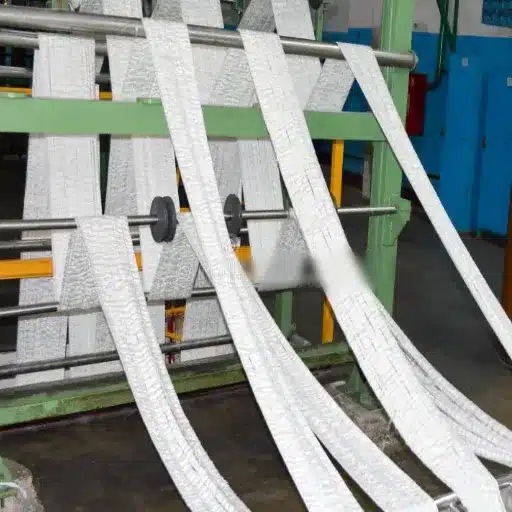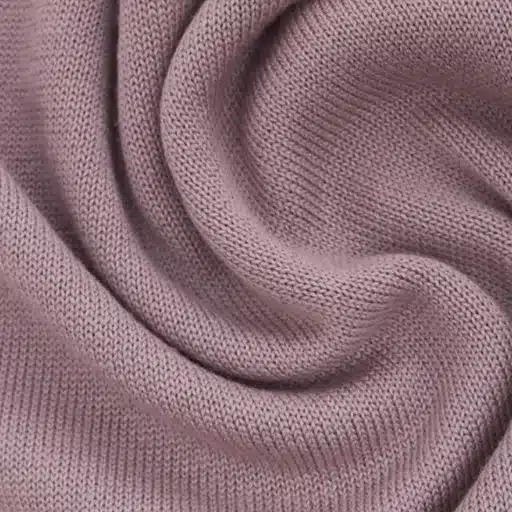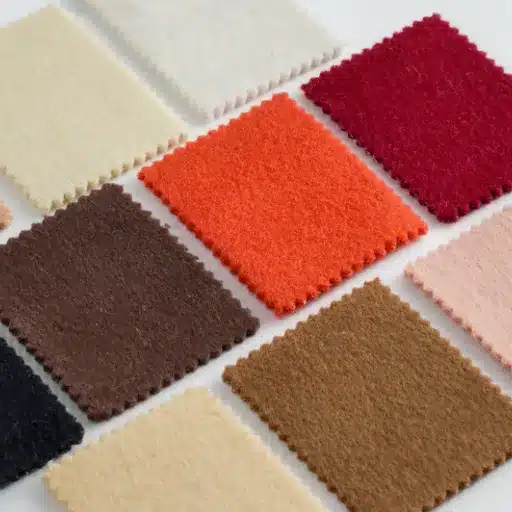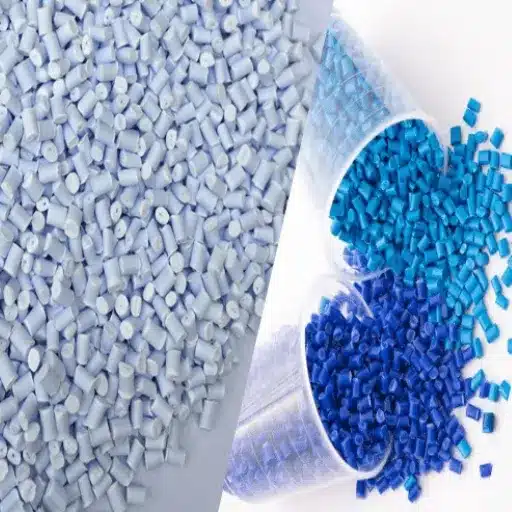From the arts to construction fields, acrylic is a standard material used across various industries due to its unique properties of versatility, stability, and appeal. So, what exactly makes acrylics so unusual that they are in demand in so many fields? This blog will guide you through an insightful exploration of acrylics, covering their composition and the remarkable properties that set them apart. From synthetic alkyl methacrylates used to produce acrylic finishes for paints and coatings, acrylics have numerous applications. A scenario might be better: an acrylic finish stands up to more wear and tear. An acrylic finish remains clearer and more functional, with a structurally superior option. Whether you are an artist, an engineer, or simply curious about the science behind everyday materials, this guide will provide you with a thorough understanding of the fascinating world of acrylics. The secrets behind its widespread application and lasting appeal are worth exploring.
Understanding Acrylic: Composition and Characteristics
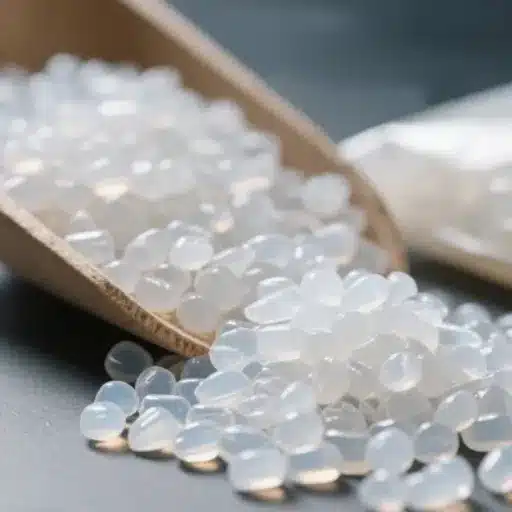
What Is Acrylic: Its Definition and Basics
Polymethyl methacrylate (PMMA), also known as acrylic, is a versatile and durable synthetic material used across a broad spectrum of industries. Acrylic is a transparent thermoplastic with the highest optical clarity, making it a perfect alternative to glass when lightweight and shatter-resistant qualities are of concern. Chemically, acrylic is obtained through a polymerization reaction of acrylate monomers; thus, the material is both strong and flexible.
Key Properties of Acrylic:
- Light transmission rate of up to 92% (comparable to high-quality glass)
- Resistance to UV light and weathering
- Maintains transparency and structural properties over time
- Easy to shape and manipulate through thermoforming
- Lightweight yet durable characteristics
This extraordinary material is found in everyday life, from items such as aquariums and eyewear lenses to signage and even medical devices. The lightweight nature and fairly durable characteristics of the material make it suitable for usage worldwide, both functionally and for aesthetic purposes.
Composition of Acrylic Fiber
In essence, acrylic fiber is a polymer consisting mainly of the acrylic monomer, acrylonitrile. Acrylonitrile is a synthetic polymer generally derived from a petrochemical resource like propylene. To improve the final properties of the fiber and, consequently, its usability, acrylic fibers may be copolymers in which another monomer, such as vinyl acetate or methyl acrylate, is present in a small amount, depending on the specific application. These comonomers impart properties such as dyeability, elastic characteristics, and softness to the fiber, making it suitable for various applications.
Polymerization usually occurs under the influence of free radicals to form long chains of acrylonitrile-based units. These fibers are light, wrinkle-resistant, and have good thermal insulating properties. Moreover, solar rays and chemical degradation cannot affect acrylic fibers. Hence, they are widely used for fabricating orthopedic outdoor fabrics and garments. The foregoing enables this fiber to adapt to various environments, ranging from fashion to industrial use.
Unique Properties of Acrylic Fabric
Acrylic fabric has enjoyed great popularity due to its unique advantages, combining durability with versatility. Its intended use is an excellent example of how being lightweight is in the interest of comfortable wear and provides a sense of durability. Another name for acrylic fibers is that they have good water-resistant properties: water evaporates from them quickly, and they remain fresh and dry to the touch. These fibers resist UV rays to a degree that renders them suitable for outdoor furniture or awnings: Such fabric-based goods retain their color well and remain structurally sound as time advances.
Thus, acrylic materials are thermally insulated just like wool, hence emerging as a popular choice for cold-weather attire, especially useful in regions where winters can be very harsh and require maximum warmth. Additionally, acrylics are hypoallergenic, making them a suitable option for individuals sensitive to natural fibers like wool. This fact, along with being able to be dyed in almost all conceivable colors, keeps it relevant as an everyday and industrial fabric.
Types of Acrylic and Their Uses
Different Kinds of Acrylic Fabrics
Depending on their composition and properties, acrylic fabrics are suitable for a larger range of applications and industries.
1. Standard Acrylic
This is the most generic species of acrylic fabric. It is lightweight and durable. This acrylic fabric is mostly used for making everyday clothing such as sweaters, socks, and scarves. Since it is resistant to moisture and fading, it would be ideal for apparel that is expected to undergo constant wear and washing.
2. Modacrylic
A modacrylic fiber is essentially an acrylic fiber modified to render it flame-resistant and highly durable. This fiber is highly sought after for various safety applications, including protective clothing, wigs, and upholstery in situations where fire resistance is paramount. The enhanced fire-resisting appeal is the fiber’s ability to resist high temperatures, especially in industrial environments.
3. Acrylic Blends
Mixing acrylic fibers with other fibers, such as cotton or polyester, results in the strengthening of two or more fibers. These blends enhance the softness and moisture management properties while retaining the acrylic’s strength and dye retention capabilities. These fabrics have a prominent application in the fashion apparel and home textile industries.
4. High Bulk Acrylic
These fabrics are known to provide the best insulation and a softer feel, making them ideal for the creation of blankets, carpets, and outerwear. In this category, an acrylic fabric traps a significant amount of air within its fibers, thereby creating a thick layer of warm air above the fabric surface in situations that require thermal insulation.
Each type of acrylic fabric caters to specific design and performance needs, thus speaking volumes for the versatility of acrylic. Being able to identify these unique materials enables manufacturers and buyers to select the right options for their respective purposes without compromising functionality and style.
Common Applications for Acrylic in the Fashion and Textile Industry
Durability, versatility, and aesthetics are all highly regarded, and acrylic is a worthy competitor in the fashion and textile markets. Its dominant uses include a multitude of garments that resemble the softness and warmth of natural fibers, such as wool, including sweaters and scarves, among others. Lightweight and more affordable alternatives to their natural fiber counterparts, acrylic positioned itself as a prime choice for winter jackets and coats.
Applications Beyond Garments:
- 🏠 Blankets and upholstery
- 🌟 Home decor items
- 🧵 Carpet-making
- 🏃 Outdoor apparel
Acrylic finds use beyond the realm of garments. There is an equally abundant use of the fiber for blankets, upholstery, and carpet-making. In terms of home decor items, acrylic penetrates all aspects, from wear resistance to sunflower resistance. Outdoor apparel is made from this fabric because it wicks moisture away from the body, allowing the wearer to stay dry and comfortable even in challenging situations.
This adaptability is further enhanced in acrylic fabric by blending it with other fibers, such as cotton or polyester, to modify its stretch, comfort, or durability properties. Stain resistance and ease of cleaning make it a particularly convenient option, which continues to ensure its use as a staple in the development of fashion and textile innovations.
Comparison With Other Synthetic Fibers
| Fiber Type | Key Characteristics | Primary Applications | Advantages |
|---|---|---|---|
| Acrylic | Soft, warm, lightweight, wool-like properties | Sweaters, blankets, winter accessories | Excellent colorfastness, thermal insulation |
| Nylon | Strong, elastic, high stretch resistance | Hosiery, ropes, performance wear | Superior strength and elasticity |
| Polyester | Durable, wrinkle-resistant, moisture-wicking | Activewear, upholstery, blends | High durability, easy care |
| Spandex | Exceptional stretch and recovery | Athletic wear, form-fitting garments | Unmatched elasticity |
Most synthetic fibers share slight differences in performance, cost, and application when compared to acrylics. The acrylic fiber simulates the qualities of wool; therefore, being soft, warm, and light, this is appreciated in sweaters, blankets, and winter accessories. Nylon, in contrast, is among the hardest and requires elasticity as a greater fiber than being stretched, which can provide the needed performance under stress for hosiery or ropes. Polyester possesses qualities such as strength, durability, moisture wicking, and wrinkle resistance, making it suitable for activewear and upholstery.
Acrylic offers the advantage of colorfastness, resulting in vibrant and colorful hues that resist fading due to prolonged exposure to sunlight and washing. Polyester is very similar to nylon and is hence most likely to require special dyeing techniques. This would mean that acrylic, although less resistant to very high temperatures than either polyester or nylon, would not be suitable for items subjected to heating processes such as those applied during textile manufacture, which require dimensional stability.
The very high stretch characteristic of Spandex allows it to naturally blend with other fibers, imparting stretch without compromising the feel or weight of the basic material. Acrylic lacks this level of stretch but compensates for that by offering greater thermal insulation. Furthermore, although all these fibers are synthetic, being of petrochemical origin, acrylic is generally lighter and cheaper, resulting in a compromise between performance and economical production.
Bottom Line: Choosing between acrylic and the rest of the synthetics really comes down to a few product-specific demands, which might include warmth, durability, stretch, or even how they’re supposed to be used in some exterior setting that shines light on their different capabilities and incapacities.
The Production Process of Acrylic Fabric
How Acrylic Fiber is Made: The Extrusion Process
The extrusion method is a crucial step in the production of acrylic fiber, involving the conversion of raw materials into a usable filament. Initially, the polymer solution will be prepared, typically consisting of acrylonitrile and other comonomers dissolved in a suitable solvent, resulting in a thick, syrupy liquid known as the spinning solution or dope.
Extrusion Process Steps:
- Solution Preparation: Polymer dissolved in suitable solvent to create spinning dope
- High-Pressure Extrusion: Solution forced through spinneret with hundreds of tiny holes
- Fiber Formation: Filaments undergo dry spinning or wet spinning
- Solidification: Solvent evaporation or chemical coagulation
- Processing: Washing, stretching, and cutting to desired lengths
Under very high pressure, the solution is forced through a device called a spinneret, which is essentially a metal plate with hundreds of tiny holes. Upon the exiting of the solution through the spinneret, the filaments undergo either dry spinning or wet spinning, depending on how they are produced. In the dry method, the filaments are swept by warm air, causing the solvent to evaporate and the solidification of the fiber. On the contrary, the wet method immerses the filaments in a coagulation bath, where the solvent disappears due to chemical reactions as the fiber solidifies.
Once solidified, the fiber is washed and stretched to allow the polymer chains to align, thus increasing the strength, elasticity, and durability of the fiber itself. The fibers are cut to staple lengths or left as continuous filaments, depending on their use in textiles and for other applications. It is a remarkably precise extrusion that makes this step crucial in achieving the desired properties in acrylic fibers.
Operations of Acrylic Fabric Production
1Blending and Dyeing
Once at hand, fibers are blended into a mix to render it as uniform as possible. Quality and texture consistency are essential for consumer fabrics. This is when dyeing typically occurs to achieve the desired color. Acrylic fibers accept most dyes well, making them suitable for bright colors. At this stage, disperse or cationic dyes are used to achieve the desired visual or physical effects.
2Spinning into Yarn
Once dyed, the fibers are spun into yarns. The selection of the spinning process, whether ring or air-jet, is made with the end uses of the fabric in mind. In particular, this stage is a critical one for yarn strength, elasticity, and surface texture. Improved spinning techniques have ensured both precision and efficiency in producing high-quality yarn.
3Weaving and Knitting
The resulting spun yarns are then woven or knitted into fabric. Weaving is generally used for structured fabrics that require some degree of durability, whereas knitting is preferred for materials that are soft and stretchy. The machinery used here ensures both speed and uniformity, which in turn makes the fabrics suitable for a wide range of applications, from apparel to upholstery.
4Finishing Treatments
A final finish is applied to enhance the performance of the fabric. Acrylic may be treated with a finishing treatment to enhance its softness, water resistance, flame retardancy, or UV protection, depending on the desired outcome for the finished application. Modern-day treatment technologies enable the application of antimicrobial finishes, opening up acrylic fabrics to specialized markets, such as medical textiles.
Based on the above-discussed process, acrylic fabric finishes with properties to suit numerous consumer and industrial needs. Continual improvements in efficiency and enhancement of the adaptability of production processes result from innovations in textile manufacturing technologies.
Quality Control in Acrylic Fabric Production
The quality of acrylic fabric can be examined at various stages with thorough attention and stringent application of industry standards. Quality control is implemented from the initial selection of raw materials, ensuring that only polymers of the highest grade are accepted. Throughout production, close monitoring of polymerization processes is maintained to achieve uniform fiber properties in criteria such as strength and elasticity, among others. A high-end technological color is employed to assess the slightest anomaly in either fibers or fabric, utilizing automated sensors and AI-based inspection mechanisms.
Quality Testing Procedures:
- Resistance to abrasion testing
- Pilling resistance evaluation
- Color fastness assessment
- Environmental impact testing (sunlight, moisture exposure)
- Durability and longevity analysis
The finished products undergo further quality checks. Tests such as resistance to abrasion, pilling, and color fastness are conducted. The laboratories can also test for environmental effects on these acrylic fibers and textiles, including exposure to sunlight, moisture, and other factors, to determine if they are suitable for the range of uses. Employing modern testing methodologies and conducting regular audits ensures that acrylic fabric manufacturers deliver acrylic products whose functional properties and longevity meet or exceed market expectations. Such thorough quality control measures are sure to enhance consumer confidence, which in turn ensures the reputation of the fabric as a reliable one across various industries.
History of Acrylic: From Inception to Present Day
The Invention of Acrylic Fiber
Timeline: The Birth of Acrylic
~1940s: Revolutionary development in synthetic materials
With the advent of acrylic fiber in approximately 1940, the synthetic world underwent a highly innovative phase during the 20th century. Following alternatives to natural fibers proposed by researchers, acrylic emerged, derived from acrylonitrile, a synthetic monomer created through chemical processes. It was created by polymerizing acrylonitrile into a high-strength, lightweight fiber with wool-like properties, making it an apt choice for textiles.
Commercial production of acrylic fiber began in 1950, when it garnered significant attention for its versatility and low cost. Unlike natural fibers such as cotton or wool, acrylic fibers are highly resistant to weathering, fading, and shrinking; thus, they find application in many articles, ranging from apparel to outdoor products. With time, improvements in production methods further enhanced the specialty of acrylic fiber, transforming it from having texture-related disadvantages, such as being coarse and unsoft, to being regarded by the Fabric Industry as having excellent dye retention. Today, they are considered very important in the industries where the working team demands materials that offer high performance with minimal maintenance.
Development Milestones in Acrylic Fabrics
🚀 1940s-1950s: The Pioneer Era
From my studies, the development of acrylic fabrics has had some notable milestones indicating their evolution and significance over time. The development of acrylic fibers began in the 1940s, with advances made by the DuPont Company, a leader in chemistry. The first acrylic fibers were marketed under the trade name Orlon. They were considered to possess the qualities of wool: texture, freedom from wrinkling, mildew, and shrinkage. Prominent as a laboratory creation already produced on a scale worthy of recognition, superiority in utility attracted interest away from natural fibers. It was at this time that acrylic began to establish a foothold in the textile world as a synthetic fiber with promise for various textile applications.
📈 1950s-1960s: Refinement and Growth
By the 1950s and 1960s, advances in production techniques allowed manufacturers to refine the texture of the fiber and enhance its usability. With better dyeing processes, the fibers would retain their bright colors through time; advancements in spinning methods, on the other hand, developed softer yarns that felt more natural. This fueled the popularity of acrylic in various consumer products, including sweaters, blankets, upholstery, and even fabrics for outdoor furniture. Its lightweight and insulating properties also made it a good choice for cold-weather apparel, a factor that further added to its demand.
🌱 Modern Era: Sustainability Focus
Post-modern era milestones featured an attitude of sustainability and environmental responsibility in the acrylic fiber industry. Natural manufacturers would invest in cleaner production methods to minimize environmental impact and meet the increasingly stringent international standards of sustainability. One would also witness the development of recycled acrylic fibers and more energy-efficient production processes. These developments further shape how acrylic fabrics serve modern industries, preserving their meaning in this eco-conscious, performance-oriented market.
How Have Acrylic Uses Changed Through the Years?
From my perspective, the application of acrylic technology has undergone a remarkable transformation over the years, thereby demonstrating the versatility of this industry. Developed in the early 20th century, acrylic fabrics were initially used primarily for exterior applications due to their durability, weather resistance, and retention of vibrant colors. Gradually, all these qualities proved beneficial for both light and heavy use in making outdoor furniture, awning fabrics, and marine fabrics. Nonetheless, with further developments in technology, the scope of application expanded far beyond such conventional uses.
Modern Applications Expansion:
- Fashion Industry: Lightweight clothing, sweaters, scarves, gloves
- Home Décor: Upholstery, curtains, decorative textiles
- Healthcare: Medical devices, prostheses, specialized equipment
- Sustainable Solutions: Bio-based and recycled acrylics
Now, production of acrylic finds applications in the industries of fashion, home décor, and healthcare. With the development of new dyeing processes and softer, more breathable variants, acrylic is now commonly used in the production of lightweight clothing for items such as sweaters, scarves, and gloves. Home décor has also been positively impacted by acrylic upholstery, curtains, and decorative day textiles that offer both style and practicality. Meanwhile, in healthcare, acrylic-based parts are used in medical devices and prostheses, further demonstrating their adaptability and safety.
Being future-oriented, heads turn to sustainable ideas, such as bio-based or recycled acrylics, which aim to reduce environmental impact without compromising performance standards. These developments indicate an ever-increasing movement towards integrating sustainability with functionality, allowing acrylic applications to continue evolving to meet the requirements of contemporary, environmentally conscious industries. This evolution stands firmly as proof of how acrylic has evolved from being a somewhat esoteric material into a truly important one, with the broadest array of applications worldwide.
Benefits and Drawbacks of Acrylic Fabric
✅ Advantages of Using Acrylic In Textiles
For the textile industry, acrylic fabric offers various advantages, making it popular for a wide range of applications. For one thing, it is lightweight yet durable, assuring long-lasting performance with no bulkiness. Another significant advantage is that acrylic has excellent insulation properties, creating a warm and cozy feeling; this becomes highly appreciated when manufacturing cold-weather wear, such as sweaters and blankets.
Key Benefits:
- Lightweight yet durable construction
- Excellent thermal insulation properties
- Moisture-resistant and mildew-resistant
- Outstanding color retention and fade resistance
- Cost-effective for mass production
- Versatile blending capabilities with other fibers
Besides being moisture-resistant, the fibers of the acrylic fabric also help resist mildew, making it a useful fabric for outdoor purposes and easy to maintain. Acrylic fabrics resist color loss, maintaining bright and fade-resistant colors even after prolonged exposure to sunlight or heavy washing. Affordable and cost-effective, acrylic fiber is a widely accepted choice in the industry for mass production with high-quality finishes. Since its inception, improvements in the manufacturer’s process have minimized pollution and given the fabric a versatile character, leading to innovations such as blending acrylic with other fibers for enhanced functionality and aesthetics.
⚠️ Disadvantages and Challenges of Acrylic Fabric
There are certain drawbacks and issues associated with acrylic fabric despite its benefits. One of the major concerns is its environmental profile, as this synthetic material is manufactured from petrochemicals, a non-renewable resource. Its manufacturing process releases some harmful fumes that pollute and degrade the environment. Additionally, since it is not biodegradable, acrylic cloth often ends up in landfills, contributing to long-term garbage accumulation.
Main Challenges:
- Environmental impact from petrochemical sourcing
- Non-biodegradable nature
- Pilling tendency over time
- Limited breathability compared to natural fibers
- Heat sensitivity during care and maintenance
- Potential comfort limitations in warm climates
Another essential drawback is that acrylic will pill over time, particularly in areas subjected to frequent friction. This pilling robs the garment of its aesthetic appeal, meaning it will have to be replaced sooner than one would like. The fabric is less breathable than natural fibers, which can trap heat and moisture, making it very uncomfortable during prolonged wear in a warm climate.
From a care perspective, acrylic fabric will melt or become damaged if exposed to high heat during ironing or in hot water during washing. The fabric requires special attention, which may be the last thing on a consumer’s mind. Lastly, while indeed the very definition of an aesthetic item in terms of look and texture, acrylic may fall short of higher-class analogues like wool or cashmere in terms of softness, warmth, or comfort. These limitations justify continuous technological advancement toward improving the sustainability, durability, and performance of this fabric.
Environmental Considerations Regarding Acrylic Production
🌍 Environmental Impact Overview
The production and lifecycle of acrylic fabric present several environmental challenges that require careful consideration and ongoing innovation to address.
Primarily, when it comes to environmental consequences, one should keep in mind that these consequences are imposed due to the intensive use of fossil fuels during the production of acrylic fabric. Acrylic is a synthetic polymer manufactured from acrylonitrile, a compound that is usually obtained through petrochemical processes. Hence, acrylic manufacturing processes are directly linked to industries that operate on non-renewable resources, thus exacerbating greenhouse gas emissions. Another major contributor to increased carbon emissions is the energy-intensive manufacturing process.
Major Environmental Concerns:
- Resource Depletion: Heavy reliance on fossil fuels and petrochemicals
- Carbon Emissions: Energy-intensive manufacturing processes
- Microplastic Pollution: Release of synthetic fibers during washing
- Chemical Waste: Industrial byproducts and toxic emissions
- Land Pollution: Non-biodegradable waste accumulation
One more thing that comes to mind is microplastic pollution. During washing, acrylic fabric releases minuscule synthetic fibers that enter water systems and then flow into oceans, ultimately disrupting marine ecosystems. These microplastics do not degrade quickly and have been found in aquatic organisms, thereby disrupting food chains with their potential toxic side effects on humans.
In the meantime, the chemical processes employed in the production and dyeing of acrylic fabrics are generating harmful byproducts and toxins. Improper disposal of industrial effluents pollutes the soil and water, creating a hazardous environment for nearby communities and ecosystems. The above factors underscore the urgent need to explore green alternatives, including more sustainable practices, and to advance recycling technologies and bio-based polymers, to minimize the environmental hazards posed by acrylic fabric.
🌱 Sustainable Solutions in Development
The industry is actively developing recycling technologies, bio-based polymers, and cleaner production methods to address these environmental challenges while maintaining performance standards.
Reference Sources
- What is Acrylic Fabric: Properties, How it’s Made and Where – Explains the composition of acrylic fibers, primarily made from acrylonitrile, and their production process.
- Acrylic fiber – Wikipedia – Provides detailed information on the polymer structure and molecular composition of acrylic fibers.
- What exactly is acrylic, and is it bad for health? – Discusses the synthetic nature of acrylic as a manmade polymer and its properties.
- The Manufacturing Process of Acrylic Plastics: What You Need to Know – Details the chemical reaction between acrylic acid and methyl methacrylate that forms acrylic plastics.
- Acrylic Sheet Is Made Of: Key Materials and Composition You Should Know – Focuses on Polymethyl Methacrylate (PMMA), the primary material in high-quality acrylic sheets.
Frequently Asked Questions (FAQs)
❓ What are acrylics made of, and how is acrylic fiber produced?
In reality, polyacrylonitrile, a synthetic polymer, is the primary material used to make acrylics. More simply put, it is something manufactured from chemicals derived from either petroleum or coal. The polymerization reaction might use a solvent to create a viscous solution that is extruded through a spinneret to form fibers. In this process, monomer is polymerized to form acrylic fibers. The fibers are then spun into yarns and used to manufacture different kinds of acrylic fabric. Understanding how acrylic is made helps us appreciate its use in clothing and textile production.
❓ What kinds of acrylic fabric are made?
Acrylic fabric comes in many varieties with distinct characteristics and applications. Most typical kinds are brushed acrylic, which is soft and fuzzy, while smooth acrylic is used for more formal clothing. It can also be fiber-blended with polyester and other polymers for better properties and performance. This versatility has made the material highly sought after by the fashion world for garments such as tracksuits and activewear. Additionally, in indoor furniture and decoration, acrylic fabric finds application due to its bright colors that do not fade easily.
❓ How is acrylic fabric made, and what is its history?
Acrylic fabric is made by polymerizing acrylonitrile and then spinning the resulting polymer into fibers. The history of acrylic begins in the 1940s, when DuPont developed this synthetic material. Initially considered for outdoor fabrics and clothing, acrylic soon earned a reputation for being light, warm, and durable. Thus, its development over the years, aided by various methods of production, has enabled the creation of acrylic fabrics for diverse purposes. The industry is hence dependent on acrylic, testifying to its development over time and its adaptability.
❓ What are some common uses of acrylic fiber?
It is used in a wide range of applications in the clothing and home textiles industries. It is kept warm and lightweight and is known to be used in making sweaters, hats, and blankets. Besides being treated for resistance to moisture and rapid drying, acrylic fabrics are primarily used in the production of outdoor gear and performance wear. Additionally, acrylic is used to upholster furniture and decorative items. Being able to mimic natural fibers while offering unique benefits, acrylic has remained a popular choice in a wide range of markets.
❓ Can acrylic fabric be environmentally friendly?
Acrylic, being synthetic, is derived from fossil-fuel-based fibers; discussion about its environmental impact remains ongoing. The production of acrylic fabrics requires significant energy and resource consumption in various areas. However, some manufacturers are now trying to adopt more sustainable methods, such as recycling acrylic and reducing water consumption. In the area of acrylic fibers, efforts now seem to be focused on environmentally friendly means that would reduce the impact of conventional acrylic manufacturing. It is of great importance for consumers to consider sustainability when making purchasing decisions.
❓ What is the primary difference between acrylic and modacrylic fabrics?
Acrylic and modacrylic fabrics are synthetic fibers that differ in their chemical composition and properties. Acrylic fiber is obtained from polyacrylonitrile, whereas modacrylic fibers consist of a copolymer of acrylonitrile and other monomers. This difference in chemical composition confers specific properties to each fiber; for example, modacrylic fibers tend to be more flame-retardant and are used in protective clothing. Each fabric type is used for various applications; acrylic, on the other hand, is considered suitable for softness and warmth for everyday clothes. Knowing such facts will help consumers purchase the fabric that suits their requirements.

